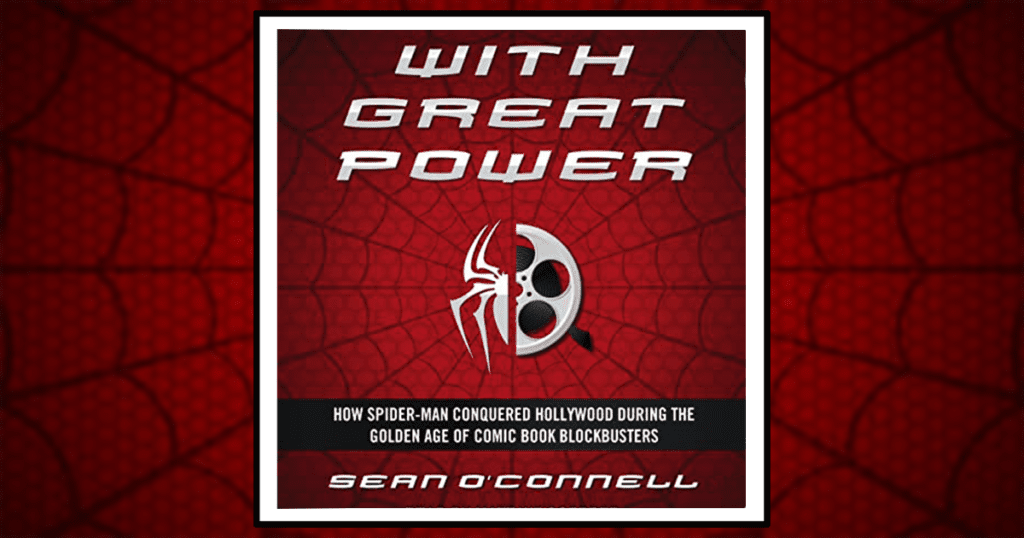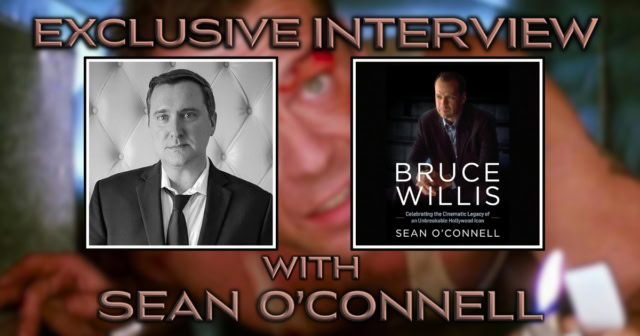Review: ‘Bruce Willis: Celebrating the Cinematic Legacy of an Unbreakable Hollywood Icon’ by Sean O’Connell
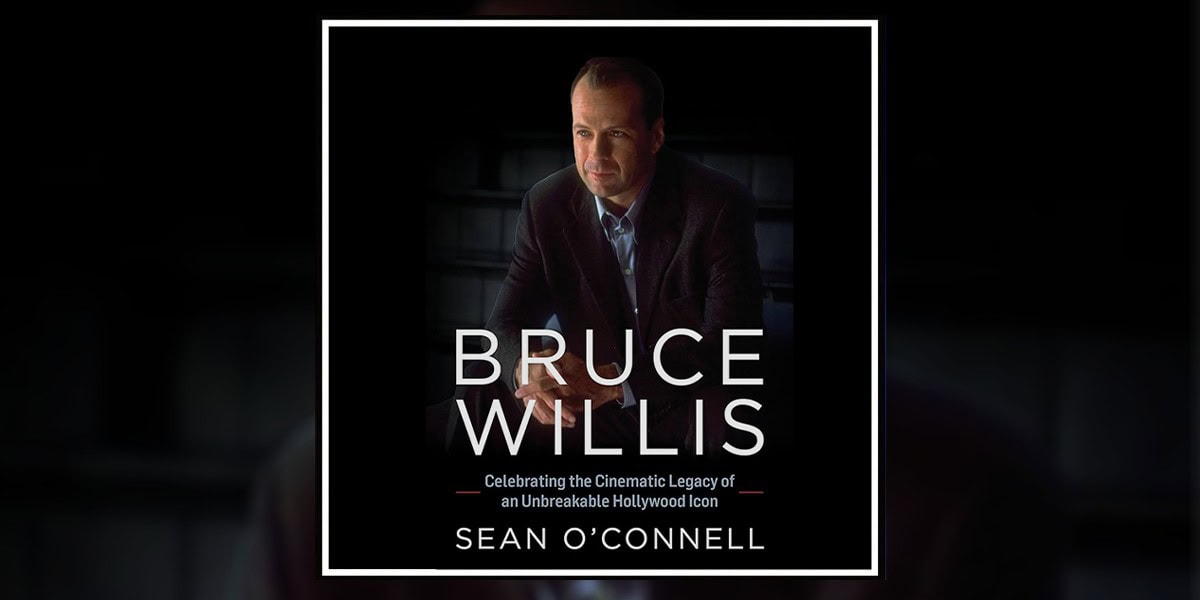
Bruce Willis is undeniably one of the most beloved pop culture icons of the late 20th and early 21st centuries. It all started in the 1980s, when Willis landed an uncredited role in Brian G. Hutton’s The First Deadly Sin. But to me, his first ever meaningful role was as Tony Amato in one of my favorite TV shows, Miami Vice. From there, he started getting cast in more important roles, such as the now iconic action hero John McClane in Die Hard. A wave of commercial and public success followed, with Willis delivering memorable performances across a diverse range of genres. Despite the actor’s significant impact on Hollywood, his cinematic journey had not been comprehensively documented or thoroughly explored in any medium yet. Now his story as an actor is being shared in the new book Bruce Willis: Celebrating the Cinematic Legacy of an Unbreakable Hollywood Icon by Sean O’Connell.
[Note: While I am reviewing this book independently and honestly, it should be noted that I was provided a digital copy of this book for the purpose of this review.]
Diving into Bruce Willis: Celebrating the Cinematic Legacy of an Unbreakable Hollywood
Sean O’Connell, who previously wrote the Release the Snyder Cut in 2021, and With Great Power (History of Spider-Man in pop culture) in 2022, offers a new detailed, affectionate tribute to Bruce Willis’ long-lasting legacy. This book is an extensive and honest tribute to one of Hollywood’s most recognizable and popular stars of recent times. It is also divided into distinct sections that focus on Willis’ career, explore his jobs as an actor, unique screen presence, and impact on the film industry.
Through a deep examination of Bruce Willis’ filmography, O’Connell crafts a narrative that celebrates Willis’ career and contextualizes his work within the broader scope of Hollywood’s evolution over the past few decades. The author organizes the book into five sections: comedies, action films, science fiction roles, auteur collaborations, and the Die Hard franchise. This structure effectively demonstrates the path that Willis followed. It also shows the versatility of his career, moving swiftly from his comedic beginnings to his roles as an action hero and beyond.
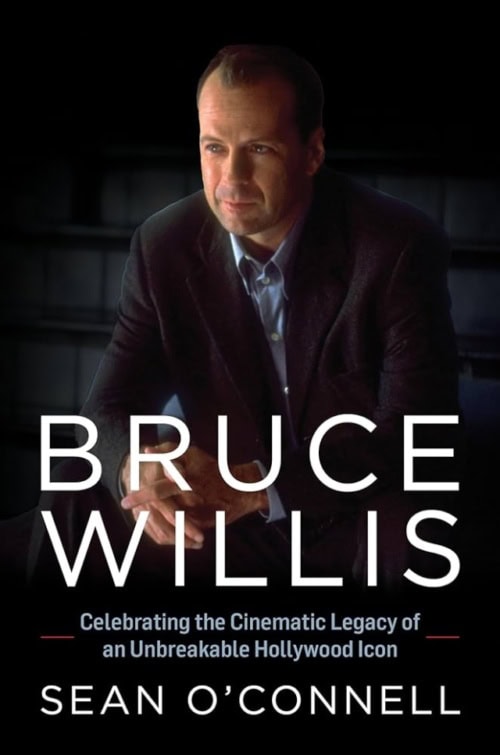
Each section delves into key films that defined the actor’s career in each genre, providing detailed analysis and behind-the-scenes insights. We learn a lot about Bruce Willis’ adventures on the set and beyond, such as several particular movies. Sean O’Connell gives us a short synopsis of the movie’s story, it’s importance, the adventures on the set, etc. He also provides us with his personal insights and opinions regarding each movie, which makes this biography even more reliable and exciting to read.
Bruce Willis’ comedies & auteur collaborations
The first section of the book covers Willis’ engagement in comedies, starting with his role in Blake Edwards’ Blind Date and moving through to films like Hudson Hawk and The Whole Nine Yards and beyond. O’Connell emphasizes Willis’ comedic timing and charm, which were visible early in his career. The author provides interesting anecdotes about the making of these films and highlights how comedic roles helped establish him as a bankable star.
For instance, Blind Date showcases Willis’ ability to blend physical comedy with his signature humor, setting the stage for his future success in more varied roles. Moving forward, O’Connell explores the actor’s work in films like The Whole Nine Yards and Death Becomes Her. In The Whole Nine Yards, Willis plays a hitman with a darkly comedic twist, demonstrating his ability to blend humor with a more dramatic narrative. O’Connell argues that Willis’ nuanced performance in this film helped redefine the boundaries of action-comedy.
In Death Becomes Her, directed by Robert Zemeckis, Bruce Willis plays a quiet and bumbling plastic surgeon. O’Connell acknowledges this role as a testament to Willis’ versatility, showing his willingness to take risks and explore different facets of his acting abilities. The author delves into the film’s production, highlighting how Willis’ comedic instincts complemented the movie’s satirical tone and special effects-driven narrative.
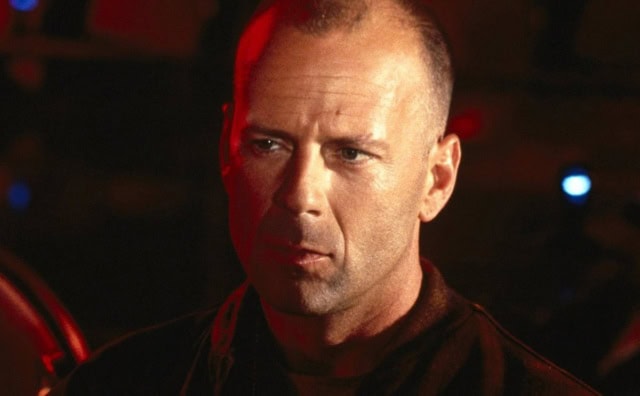
Sean O’Connell also touches upon Hudson Hawk, a film that was a commercial failure but has since gained a cult following. Despite its initial reception, the author acknowledges the film’s ambition and Willis’ enthusiastic performance, suggesting that it showcased his willingness to push creative boundaries. Overall, the Comedy section paints a rather warm and bold picture of Willis’ comedic talent. O’Connell proves with his arguments that these roles were crucial in shaping Willis’ career, allowing him to demonstrate his range and setting the stage for his success in other genres.
Another section explores Willis’ work with auteur directors, including Quentin Tarantino in Pulp Fiction, M. Night Shyamalan in The Sixth Sense, and Wes Anderson in Moonrise Kingdom. O’Connell shows us that these collaborations brought out some of Willis’ best performances, as he rose to the challenge of working with visionary filmmakers.
The part focusing on Pulp Fiction is particularly compelling, detailing how Willis’ portrayal of the washed-up boxer Butch Coolidge revitalized his career and demonstrated his ability to tackle complex characters. Similarly, his analysis of The Sixth Sense emphasizes how Willis’ restrained performance added depth to Shyamalan’s supernatural thriller. We read how Willis’ restrained and nuanced performance brought emotional depth to it, contributing to its critical and commercial success. The film’s iconic twist ending, and Willis’ role in it, solidified his reputation as an actor capable of delivering powerful dramatic performances.
In Unbreakable, Willis reunites with Shyamalan to play David Dunn, a security guard who discovers his extraordinary abilities. O’Connell explores how this film allowed Willis to portray a more subdued and introspective character, contrasting sharply with his action-oriented roles. The author praises Willis’ ability to convey vulnerability and strength, making David Dunn one of his most compelling characters.
Furthermore, we can see how people love this a lot, comparing it even with other superhero productions. And it’s thanks to the fact, that Unbreakable is a story about a superhero who is not a part of the Marvel or DC universes.
Die Hard and The Fifth Element period of his career
Following the success of Die Hard, Willis continued to expand his action-hero persona in films like The Last Boy Scout and 16 Blocks. In The Last Boy Scout, directed by Tony Scott, O’Connell analyzes how Willis’ gritty performance and sharp comedic timing enhanced the film’s darkly humorous tone. The author also notes that Willis’ collaboration with screenwriter Shane Black, known for his snappy dialogue and complex characters, resulted in a compelling and memorable action film.
16 Blocks, directed by a legendary Richard Donner, features Willis as Jack Mosley, a weary and alcoholic NYPD officer tasked with transporting a key witness. O’Connell shows his love for Willis’ ability to bring depth and nuance to his character, transforming what could have been a standard action role into a powerful portrayal of redemption and resilience. We can notice that the highlights of this part are Willis’ performance in both physical and emotional form, which demanded a lot from him. Demonstrating his dedication to the craft, we realize why he was a perfect star to play in this movie.
The chapter also covers RED which is set way later in Bruce Willis’ filmography. Willis was Frank Moses, a retired CIA operative. O’Connell examines how RED blends action and comedy, with Willis effortlessly transitioning between intense action sequences and humorous moments. The film’s ensemble cast, including Helen Mirren and John Malkovich, adds to its appeal, but O’Connell says that it is Willis’ charismatic lead performance that anchors the film. Which I agree with, especially since action movies are a considerable part of Willis’ career. While watching RED, we can see why.
The other chapter changes the focus of the book to the “Science-Fiction” part of Bruce Willis’ career. The author offers us a fascinating exploration of the actor’s contributions to the genre. This section delves into how Willis’ roles in science fiction films have allowed him to explore complex characters and narratives, often pushing the boundaries of his acting abilities.
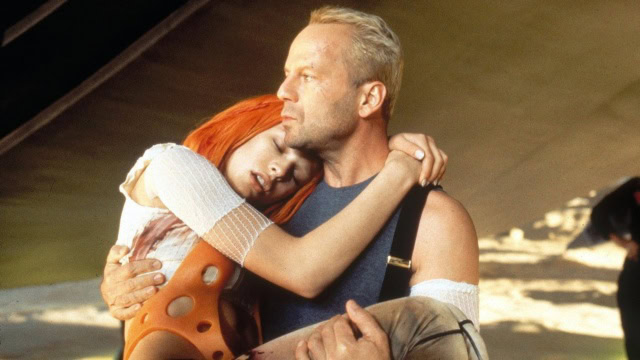
We begin with one of my favorite Bruce Willis’ movies, which is The Fifth Element, directed by Luc Besson. In this visually stunning and eccentric film, Bruce Willis plays Korben Dallas, a former special forces major turned cab driver who becomes humanity’s last hope against an ancient evil. O’Connell discusses how Willis’ every man appeal, and personal charm provide a grounding force amidst the film’s goal to make everything futuristic and give us larger-than-life characters.
He highlights Willis’ chemistry with co-star Milla Jovovich and praises his ability to balance humor and action, which adds depth to the film’s fantastical storyline. O’Connell also provides insights into the film’s production, including the challenges of working with Besson’s ambitious vision and the groundbreaking special effects. We also understand why this movie was one of the pioneers of modern-time sci-fi movies.
Next, I read about the examination of Willis’ performance in Terry Gilliam’s 12 Monkeys. In this dystopian time-travel thriller, Willis plays James Cole, a convict sent back in time to prevent a devastating plague. The author delves into the psychological complexity of the role, noting how Willis’ portrayal of Cole’s confusion, desperation, and determination is both haunting and compelling. He proves that this film showcased Willis’ ability to handle intricate and emotionally charged narratives, proving his versatility as an actor. O’Connell also discusses the film’s critical acclaim and its impact on the science fiction genre.
The chapter then transitions to Armageddon, directed by Michael Bay. In this high-octane disaster film, Willis stars as Harry Stamper, a roughneck oil driller tasked with saving the world from an asteroid collision. O’Connell highlights how Willis’ performance anchors the film, providing a relatable and heroic figure amidst the film’s spectacular special effects and explosive action sequences. He also notes the film’s commercial success and its role in solidifying Willis’ status as a leading man in blockbuster cinema, even though those movies were not always critically acclaimed.
O’Connell doesn’t forget about Willis’ role in Surrogates, a film set in a future where people live their lives through robotic surrogates. Willis plays FBI agent Tom Greer, who investigates a murder that challenges the foundations of this surrogate-dependent society.
The author analyzes how Willis’ performance reflects the film’s themes of identity, connection, and humanity. He notes that while the film received mixed reviews, Willis’ portrayal of a man grappling with the loss of his real life was compelling and thought-provoking. Throughout those chapters, we can understand how Willis’ performances have contributed to the genre’s evolution and why they were so important.
O’Connell also tells us about Willis’ ability to bring authenticity and emotional depth to his roles, which has made him a standout in science fiction. A genre often dominated by special effects and fantastical plots. Thanks to this chapter, we won’t be able to forget that Bruce Willis was not only a comedy guy turned into an action guy, but he was an important part of the evolution of the sci-fi genre.
The Die Hard franchise
No book about the life of Bruce Willis would be complete without a thorough examination of the Die Hard series. The final section of this one is dedicated to this iconic franchise, from the groundbreaking original to its various sequels. O’Connell provides an in-depth look at how Die Hard redefined the action genre and solidified Bruce Willis’ status as an action superstar. He also discusses the evolution of the series, comparing the sequels and analyzing how they each contributed to the legacy of John McClane.
At the time, before becoming a part of this franchise, Bruce Willis was primarily known for his role in the TV series Moonlighting and had yet to establish himself as a major film star. O’Connell explores the unconventional casting choice, noting how Willis’ every man charm and relatability distinguished him from the muscle-bound action heroes of the 1980s like Arnold Schwarzenegger or Sylvester Stallone.
Bruce Willis was the perfect choice for the role of John McClane with his wit, vulnerability, and sheer determination, which allowed him to present to the viewers a new kind of action hero.
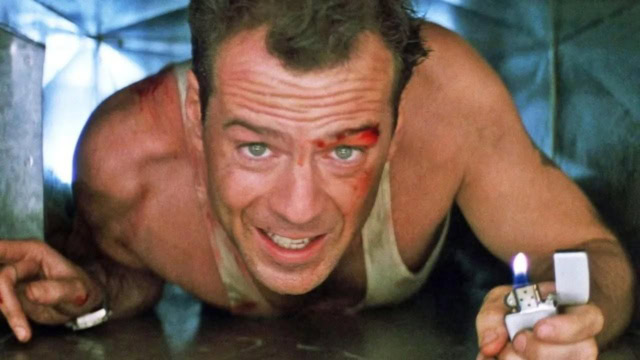
O’Connell continues by discussing the commercial and critical success of Die Hard, which grossed over $140 million worldwide and received widespread acclaim for its thrilling action sequences and Willis’ charismatic performance.
We then transition to the sequels where we deeply explore their production, changes in storytelling throughout the years, and more. The author explains how John McClane became an iconic character, representing the hero everybody could be, without the superpowers or any other advantages. He was just a regular guy, who was in the wrong place, at the wrong time.
The Die Hard chapter of this biography is a comprehensive and engaging analysis of one of the most influential action franchises in film history. Through detailed examinations of each film, behind-the-scenes insights, and thoughtful commentary, O’Connell provides readers with a deeper understanding of Bruce Willis’ contributions to the Die Hard series and his lasting impact on the action genre.
Final and overall thoughts on this Bruce Willis book
Bruce Willis: Celebrating the Cinematic Legacy of an Unbreakable Hollywood Icon is another outstanding book written by Sean O’Connell. It is a comprehensive and engaging tribute to one of Hollywood’s most popular and beloved stars. Sean O’Connell perfectly detailed and analyzed each important movie in Bruce Willis’ career and made it so easy to read.
Choosing to write chapters of this book in a form of genres Bruce Willis played in, was an extraordinary idea. Thanks to the chosen form, it’s easy to read this book in any order we want. If we want to start with Die Hard and finish with Sci-fi, then no problem. I felt no time passing while reading, which was fantastic because I just wanted to read more and more about Bruce Willis’ career. It was straightforward to understand and full of anecdotes, which also adds a lot to my overall opinion of this book.
You can see that Sean O’Connell wrote this book with a great passion and love for the subject. If you get a chance, go and buy this book because it’s the ultimate compendium of knowledge that you can find about Bruce Willis’ performances in film and television.
My rating: 9½/10
Bruce Willis: Celebrating the Cinematic Legacy of an Unbreakable Hollywood Icon by Sean O’Connell is now available on Amazon and other bookstores such as bookshop.org. Are you a fan of Bruce Willis? Do you plan to check out this book? Let us know on social media @mycosmiccircus!
